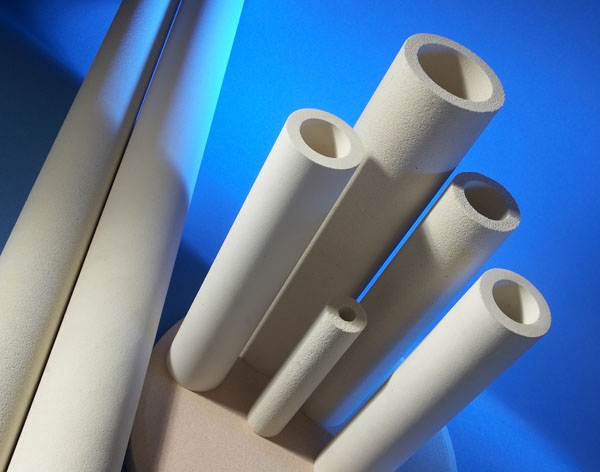The generic word ‘filtration’ can encompass many applications across a wide range of industries, the majority of which can be served by the commonly available filter media where process temperatures are low and / or the environment inert.
It therefore takes a very special medium to tackle the difficult and unusual conditions found in today’s chemical, petrochemical or general process industries.
Mantec Filtration solves these difficult problems by supplying porous ceramic media that are chemically inert, stable and available in a variety of controlled and special grades, with temperature capabilities of up to 900ºC.
Available Ceramic Filter Media
Mantec has a range of standard ceramic materials. Each has its unique characteristics and capabilities. The materials used most commonly are Pyrolith and Coralith.
Pyrolith
Aluminosilicate particles bonded by glass. Pyrolith can withstand hot and cold acids (not hydrofluoric acid or acid fluorides), alkaline solutions up to pH9 and hot gases up to 900°C.
Coralith
Aluminosilicate particles bonded by glass. Coralith can withstand hot and cold acids (not hydrofluoric acid or acid fluorides), alkaline solutions up to pH9 and hot gases up to 900°C.
Please click here to download our Material Data Sheet.
Typical Filtration Tube Sizes
Mantec has a range of standard ceramic elements. These can be fitted into our range of Aerox filter units or custom manufactured for inclusion into existing or purpose built customer housings.
Specific sizes are available on request but vary from 114mm long x 29mm OD x 13mm ID to 1000mm long x 70mm OD x 40mm ID.
Flow Rates v Pressure Drop
Flow rate v pressure drop information can be found in the charts here.
Common Benefits
- Controlled pore size
- Controlled porosity and permeability
- Coalescing capability
- Chemically inert – can handle acidic gases
- High Temperature capability to 900ºC
- Range of standard element sizes
- Low cost of ownership
Filter Cleaning
The cleaning properties of an element are dependent on the contaminate and the conditions. Normal methods of cleaning are surface brushing, back flushing or cleaning with a suitable solvent solution. With depth filter media, cleaning only usually removes surface contaminate with particles trapped in the pores being difficult to remove. Once the pressure drop across the filter reaches an unacceptable level, and cleaning has failed to restore the flow, then the filters should be replaced.
Applications
Applications for filtration tubes fall into two main groups, each explained further:




